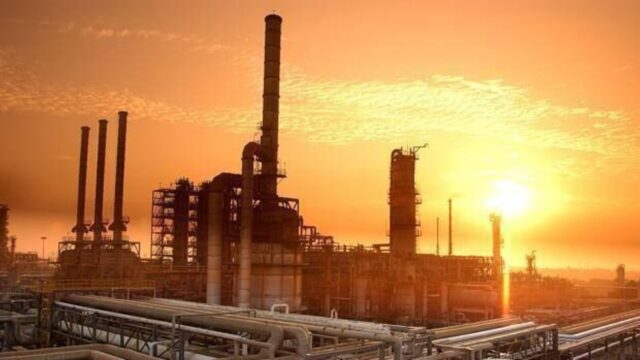Oil prices rose for a second week in a row and settled at their highest in nearly two months on Friday, January 26, as positive US economic growth and signs of Chinese stimulus boosted global demand expectations, while Middle East supply concerns added support to price rise.
Brent crude futures rose $1.12, or 1.4 per cent, to settle at $83.55 a barrel, their highest close since November 30. US West Texas Intermediate crude (WTI) climbed 65 cents or 0.8 per cent to $78.01, also the highest close since November.
Both oil benchmarks made weekly gains of more than six per cent, marking their biggest weekly increase since the week ending October 13 after the start of the Israel-Hamas conflict in Gaza.
Supply concerns are evident in the structure of Brent futures. The premium of the first-month contract to the sixth on both Brent and WTI rose to the highest since November, indicating a perception of tighter prompt supply, according to news agency Reuters.
Back home, on the Multi Commodity Exchange (MCX), crude oil futures due for a February 16 expiry, settled 0.08 per cent higher at ₹6,386 per bbl, having swung between ₹6,208 and ₹6,391 per bbl during the session, against a previous close of ₹6,381 per barrel.
What’s driving crude oil prices?
-Analysts said that economic stimulus from China, stronger-than-expected 4Q GDP growth in the US, cooling US inflation data, ongoing geopolitical risks, and the larger-than-expected 9.2 million-barrel drop in US commercial crude stocks for last week have all combined to wedge prices higher.
-The world’s largest economy grew at a faster pace than expected in the fourth quarter, suggesting the Federal Reserve would be in no rush to cut interest rates. In the US, the Bureau of Economic Analysis’ advance GDP estimate showed gross domestic product in the last quarter increased at a 3.3 per cent annualized rate, compared with the consensus forecast of two per cent.
-The Houthi military spokesperson said that naval forces carried out an operation targeting an oil tanker in the Gulf of Aden, causing a fire to break out, adding to worries of supply disruptions. A potential fuel supply disruption after a Ukrainian drone attack on an export-oriented oil refinery in southern Russia also supported prices.
-Oil was also boosted earlier this week by a larger-than-expected drawdown in US crude stockpiles. The depletion in inventories, especially around the WTI delivery point at Cushing in Oklahoma and across the Midwest, could create a squeeze on nearby futures prices.
-On the demand side, US – the world’s biggest oil consumer, registered faster-than-expected economic growth in the fourth quarter, data showed on Thursday. Sentiment was also buoyed this week by China’s latest measures to boost growth. Traders, however, bet the US central bank is more likely to start its round of rate cuts in May, rather than March, weighing on crude futures.
Also Read: India’s crude oil output down 1.03% to 2.5 MMT in December, imports rise 1.1% YoY: PPAC
Where are prices headed?
Prolonged Red Sea attacks are likely to disrupt the supply chain by delaying the transportation of goods, leading to shortages. “As demand outpaces supply, prices may rise, contributing to inflation. Industries heavily reliant on just-in-time inventory systems may be particularly vulnerable to such disruptions,” said Nigel Green, CEO, deVere.
In addition, the uncertainty surrounding global trade can contribute to increased commodity prices, such as oil. “Higher energy costs can cascade through the supply chain, affecting various industries and adding inflationary pressures. This scenario may echo the oil shocks of the past, leading to broader economic consequences,” added Green.
The recent crisis in the Red Sea also highlights geopolitical tensions, which can further exacerbate inflationary concerns. Investors often seek safe-haven assets like gold and bonds during periods of geopolitical uncertainty, impacting their prices.
Unlock a world of Benefits! From insightful newsletters to real-time stock tracking, breaking news and a personalized newsfeed – it’s all here, just a click away! Login Now!




